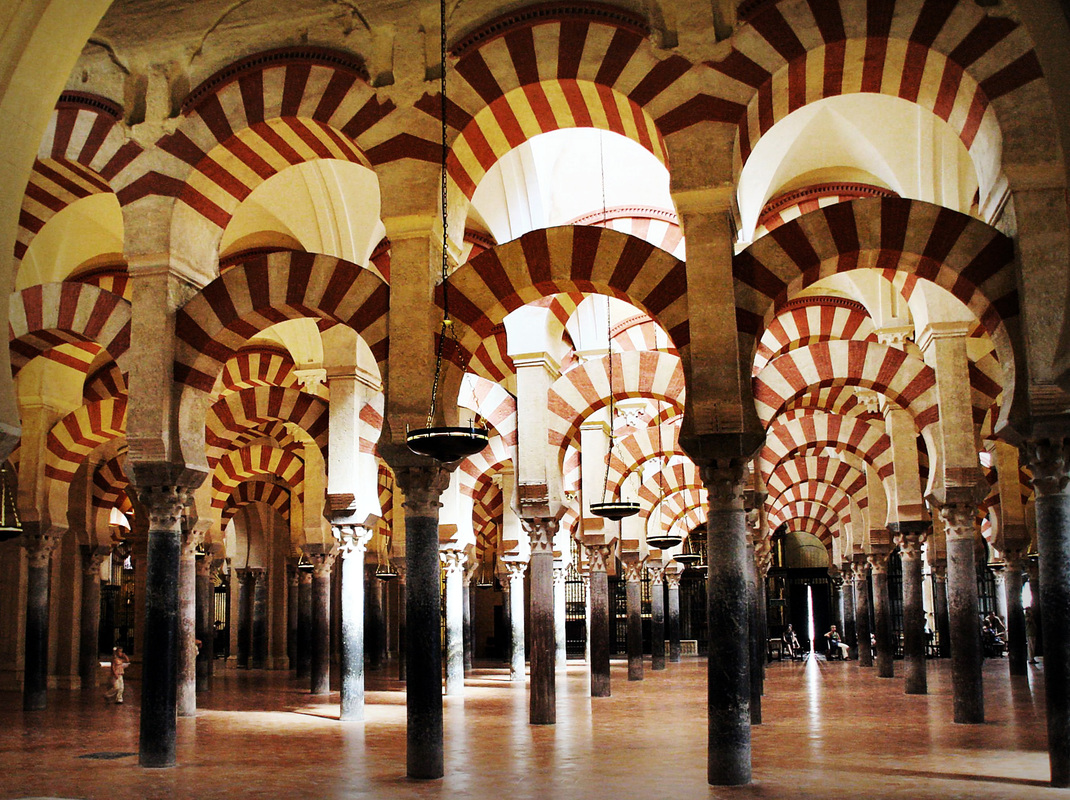Here everyone has stopped by, the Phoenicians, Greeks, Romans, Visigoths, Byzantines, the Arabs. Styles have followed each other, Romanesque, Gothic, Renaissance, Baroque, Rococo, Romanticism, Modernism… In the pueblos there are certainly strong traditions – like narrow streets, white-limed facades and iron-bared windows. From the entry often a passage to an outdoor area, and the kitchen on the bottom level, while foodstuff used to be stored on the second – But in cities it’s layer-upon-layer. Mosques became churches; fish markets are becoming art museums.
And, in turn, now contemporary Spanish Architecture is spreading over the world. Rafael Moneo designed Moderna Museet in Stockholm, Ricardo Bofill spectacular housing blocks in France and Sweden. Santiago Calatrava has designed public buildings in Germany, Switzerland, Argentina and recently the new train station at the WTC in New York. Spanish architecture is highly regarded. But the latest financial crisis has quieted domestic development. Some say that this is just what’s needed. Now it’s time to take advantage of the local history and create a new humane, sustainable and generous architecture in Spain. The Andalusian wave?
| MAUS MALAGA | Malaga Soho Urban Art (MAUS) was inaugurated in June in the center of Malaga. It's intended to give a formally dilapidated inner-city area a facelift and create an Arts District for painting, sculpture, music, audiovisuals and performance - without demolishing and building anew. The first major move was to commission Shepard Fairey (aka, OBEY) and D'Face to transform an enormous building wall into one of the largest art attractions in the city. The two pieces grew quickly during the week allotted. (image: Faith 47) |
| CORDOBA MOSQUE | When the Grande Mosque in Cordoba was finished in the 10th century there were no walls between the hundreds of columns inside or the trees outside. Light was able shine through. Nor was it just a temple, but also a public building, a meeting place, a school, a social center as well as a spiritual oasis. Today the Great Mosque is also a Cathedral. When Christian forces conquered Cordoba in 1236, it was immediately consecrated as such, which saved it to become one of the greatest tourist attractions in Spain. At the same site there was a Visigoth church in the 6th century. Muslims have asked to also be allowed to pray in the mosque but have up to now been denied. |
| SEVILLA PARASOL | Long history in short: First there was a market place at the La Encarnación square in the middle of Seville. In the 70s the then dilapidated building was torn down. In the 90s a parking structure was planned, but Roman and Moorish remains found, and the project stopped. In 2005 a bold project was initiated: The world’s largest wooden building (made of Finnish birch!) After a series of problems, and way over budget, the structure now stands over the entire square. At the bottom a museum to house the archeological artifacts, at the ground level a shady square and a market place, on higher levels restaurants, and at the top several terraces with amazing views of the city. |
| MALAGA TODAY AND YESTERDAY | In the ancient part of Malaga there are examples of almost every period. But the city grew most quickly during the 60s. On the periphery several apartment buildings constructed to house the workers who came from the countryside. Fishing villages along the coast where transformed with hotels and vacation homes. City planning was pretty much nonexistent. Development was intended to push forward. The Facebook page “Malaga Hoy y Ayer” is an archive open to the public. New photographs of the old and new city are posted everyday, many with personal comments. |




 RSS Feed
RSS Feed

